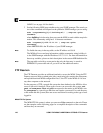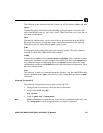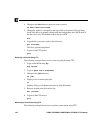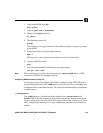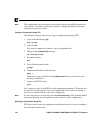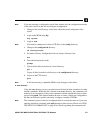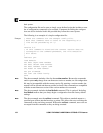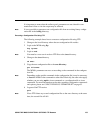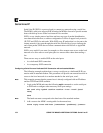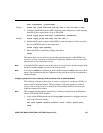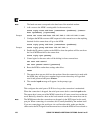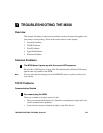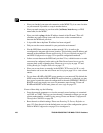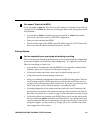
154 USING THE M208’S ADDITIONAL OPTIONS: Serial Line IP
Serial Line IP
Serial Line IP (SLIP) is a protocol used to connect two networks using a serial line.
The M208’s serial ports support SLIP allowing the M208 to be used to provide remote
hosts with dial-up access to the local network via a modem.
SLIP is a very simple protocol and does not have any type of packet identification,
error detection/correction, or address configuration. It relies on upper level protocols
(IP, TCP and UDP) for such tasks. With SLIP, every IP packet that is to be sent to the
remote network is just sent through the serial line followed by a byte to indicate the
end of that packet. SLIP does not allow communications with Novell or AppleTalk
network.
SLIP is very useful if you want, for example, to allow remote users access to the local
network or to allow users to send print jobs to a remote office rather than sending a
fax.
There are two ways to enable SLIP on the serial ports:
• As a dedicated SLIP connection.
• As a temporary SLIP connection
Configuring a Serial Port as a Dedicated SLIP Connection with an Attached Modem
The following example explains how to set up a serial port as a dedicated SLIP con-
nection with an attached modem. This procedure will provide one remote host dial-in
access to the local network via a modem attached to the serial port, com1.
This example assumes that the remote host is already configured with an IP address
and has TCP/IP and SLIP available.
1 Login to the M208 and enter the following npsh commands to set the serial port
to SLIP and to configure other necessary serial port settings.
set com1 slip ignbrk ctsflow rtsflow -ixon -inoff [baud
rate]
save
The baud rate must correspond to the baud rate of the attached modem.
2 Add a route to the M208’s routing table for the remote host.
store tcpip route add host [
remotehost ipaddress
] [r
emote-
N
o
t
e
N
o
t
e



